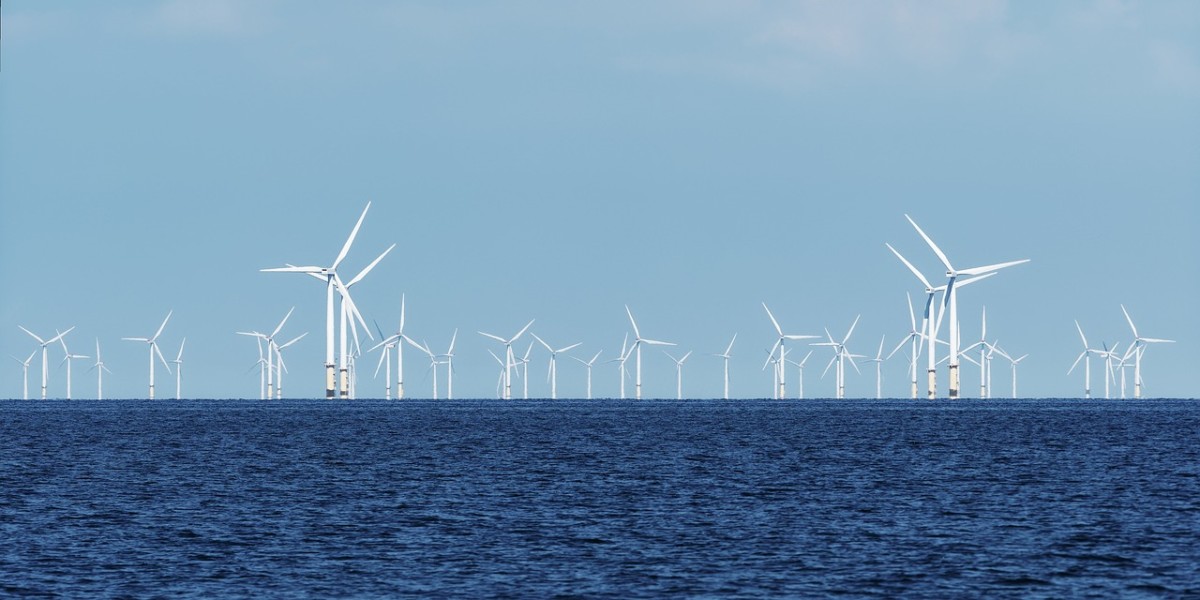Advancements in Offshore Wind Turbine Technology
In recent years, the offshore wind industry has witnessed remarkable advancements in offshore wind turbine technology, propelling the sector to new heights.
Offshore wind farms, characterized by wind turbines located in bodies of water.
Such as the North Sea, coastal areas, and even high seas, have become a vital source of clean electricity generation.
With ambitious targets set by countries worldwide to combat climate change, the evolution of offshore wind turbine technology plays a pivotal role in meeting these goals.
In this article, we will delve into the latest advancements in offshore wind turbine technology.
Exploring how they are revolutionizing the industry, reducing costs, increasing energy efficiency, and driving the transition to a greener future.
Advancements in Offshore Wind Turbine Technology
- Larger Blades and Taller Towers: Harnessing More Wind Energy
Advancements in offshore wind technology have led to the development of larger wind turbine blades and taller towers.
These innovations enable turbines to capture more wind energy, even in low wind speed areas.
By utilizing bigger blades, wind turbines can generate more power. Resulting in increased energy production and improved efficiency.
The taller towers are designed to reach higher wind speeds. Which are more prevalent at greater heights, harnessing the wind’s kinetic energy to its fullest potential.
These improvements significantly enhance the capacity factors of offshore wind farms. Maximizing their output and making them more economically viable.
- Technological Advancements: Enhancing Efficiency and Lowering Costs
The offshore wind industry has benefited from significant technological advancements in recent years.
One such development is the use of big data analytics and machine learning algorithms to optimize the operation of wind farms.
Through the collection and analysis of vast amounts of data, operators can fine-tune the performance of turbines, improve maintenance strategies.
And predict potential failures, reducing downtime and maintenance costs.
These advancements not only increase the overall energy efficiency of offshore wind farms but also contribute to lowering the cost of offshore wind power.
Leveraging Big Data and Machine Learning for Enhanced Performance

The offshore wind industry has embraced the power of big data analytics. Plus, machine learning algorithms to revolutionize the operation of wind farms.
By collecting and analyzing vast amounts of data from various sources, such as meteorological sensors, turbine sensors, and maintenance logs.
Operators can gain valuable insights into the performance of offshore turbines.
These insights allow them to optimize the operation of wind farms, enhancing energy efficiency and reducing costs.
By leveraging big data analytics, operators can identify patterns and trends in wind speed, direction, and other environmental factors.
This knowledge enables them to adjust turbine settings and positioning to maximize energy production.
Furthermore, machine learning algorithms can continuously learn from the collected data, enabling predictive maintenance strategies.
By identifying potential failures or performance issues in advance, operators can schedule maintenance activities proactively. Minimizing downtime and reducing maintenance costs.
Fact: According to a study conducted by Sandia National Laboratories, the application of advanced data analytics and machine learning algorithms in offshore wind farms has shown the potential to reduce operations and maintenance costs by up to 25% (Source: Sandia National Laboratories).
Driving Cost Reductions through Innovation
Technological advancements in offshore wind turbine technology have played a vital role in driving down costs.
Making offshore wind power more competitive with other energy sources.
As new technologies emerge and mature, the cost of constructing, operating, and maintaining offshore wind farms continues to decrease.
One area of innovation is the development of more efficient and reliable turbines.
Major players in the industry, such as Siemens Gamesa and GE Renewable Energy, have made significant strides in designing modern wind turbines with higher power outputs and improved reliability.
These turbines are specifically optimized for offshore conditions. With features such as advanced control systems, adaptive pitch control, and integrated sensor networks that enhance their overall performance.
Streamlining the Supply Chain and Reducing Dependency
The offshore wind industry has recognized the importance of streamlining the supply chain to drive further cost reductions.
By establishing closer collaborations between manufacturers, developers, and suppliers, the industry can optimize logistics, reduce lead times.
And eliminate unnecessary costs associated with the procurement of components.
Efforts are being made to localize the supply chain, particularly in countries with ambitious offshore wind goals. Such as the United Kingdom and various European countries.
This localization reduces dependency on imports, enhances the regional economy, and facilitates knowledge transfer and technological advancements.
Embracing Renewable Energy Partnerships

To accelerate the development and deployment of offshore wind projects, partnerships between governments, industry stakeholders, and research institutions are vital.
The U.S. Department of Energy’s Wind Energy Technologies Office, for example, actively collaborates with industry leaders, universities, and national laboratories.
To advance offshore wind technologies and overcome technical challenges.
Moreover, power purchase agreements (PPAs) have emerged as a key mechanism to foster renewable energy growth.
These agreements, between offshore wind developers and utilities or corporations, ensure a long-term market for the generated electricity. Promoting investment and reducing project risks.
Such agreements have been instrumental in bringing ambitious offshore wind projects to fruition.
Including the development of real sea giants capable of producing several gigawatts (GW) of capacity.
Conclusion
Technological advancements in offshore wind turbine technology, fueled by the use of big data analytics, machine learning, and innovative designs, are transforming the offshore wind industry.
These advancements enhance the overall energy efficiency of offshore wind farms. Lowering costs, and accelerate the transition to a clean energy future.
By leveraging big data and machine learning algorithms, operators can optimize the performance of wind farms. Reducing maintenance costs, and maximize energy production.
Streamlining the supply chain, fostering renewable energy partnerships
- Composite Materials and Carbon Fiber: Lightweight and Durable Designs
Composite materials, including carbon fiber, have revolutionized the design and construction of offshore wind turbines.
These materials offer exceptional strength-to-weight ratios, enabling the production of lighter and more durable turbine components.
With reduced weight, turbines can harness wind energy more efficiently, even at low wind speeds.
Additionally, composite materials exhibit excellent resistance to corrosion, making them ideal for the harsh offshore environment.
By utilizing these advanced materials, the offshore wind industry can overcome maintenance challenges, extend the lifespan of turbines, and significantly reduce the carbon footprint associated with energy production.
Enhancing Efficiency with Lightweight Components
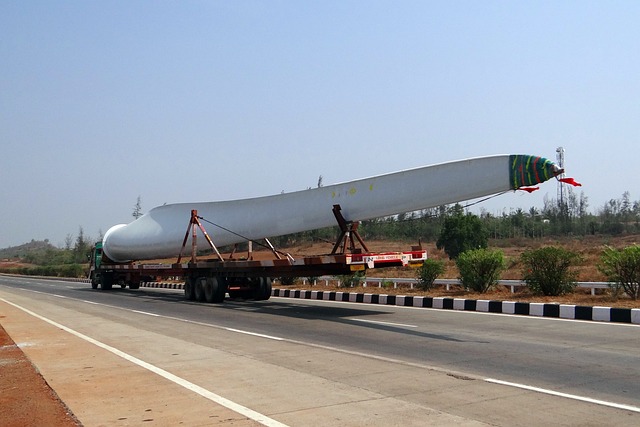
The use of composite materials, such as carbon fiber, in offshore wind turbine design has brought about a paradigm shift in the industry.
These advanced materials offer remarkable strength-to-weight ratios, allowing for the production of turbine components that are significantly lighter than their conventional counterparts.
The reduced weight of these components enables turbines to harness wind energy more efficiently, even in areas with lower wind speeds.
By capitalizing on the lightweight properties of composite materials, offshore wind turbines can generate electricity with higher energy yields and optimize energy production.
Fact: According to a study conducted by the European Wind Energy Association (EWEA), the utilization of composite materials in offshore wind turbine blades has led to a weight reduction of up to 20%.
Resulting in an increase in energy output by approximately 5% (Source: EWEA).
Durability and Corrosion Resistance
In addition to their lightweight nature, composite materials exhibit excellent resistance to corrosion, which is crucial for the longevity and durability of offshore wind turbines.
The harsh offshore environment, including exposure to saltwater, high humidity, and strong winds, poses significant challenges for turbine components.
However, composite materials have proven to be highly resilient in such conditions, mitigating the effects of corrosion and extending the lifespan of offshore turbines.
By using composite materials, the offshore wind industry can overcome maintenance challenges associated with corrosion damage, reducing downtime and maintenance costs.
This increased durability also contributes to the long-term sustainability of offshore wind farms, allowing them to operate efficiently for extended periods without compromising performance.
Reducing the Carbon Footprint
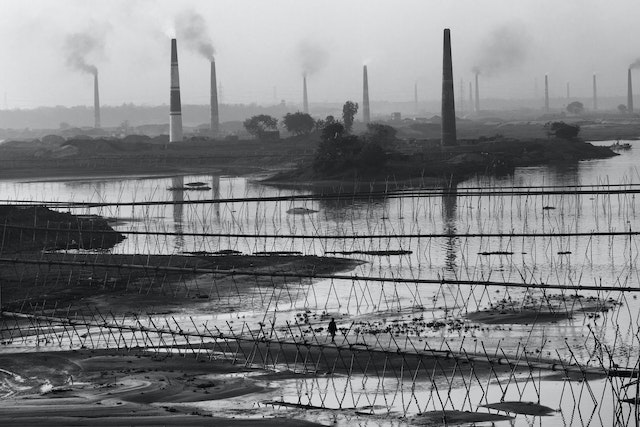
The adoption of composite materials in offshore wind turbines aligns with the global objective of reducing carbon footprints.
By replacing conventional materials with composites, the offshore wind industry minimizes the environmental impact associated with energy production.
Composite materials require fewer raw materials and energy-intensive manufacturing processes, resulting in lower carbon emissions during the turbine production phase.
Moreover, the lightweight design of composite turbine components reduces the energy required for transportation and installation.
This aspect further contributes to the overall reduction of the carbon footprint throughout the entire supply chain of offshore wind farms.
Driving Technological Advancements
The increasing use of composite materials in offshore wind turbine technology has spurred continuous innovation and research.
Leading companies in the wind energy sector, such as Siemens Gamesa and GE Renewable Energy, are investing heavily in the development of new composite-based designs and manufacturing techniques.
These endeavors aim to enhance the efficiency, durability, and cost-effectiveness of offshore wind turbines.
Collaborations between research institutions, national laboratories like Sandia National Laboratories, and industry stakeholders further accelerate the progress in composite materials’ implementation.
Through these collaborations, case studies and pilot projects are conducted to validate the performance and reliability of composite-based offshore turbines in real-world conditions.
Technological Advancements Conclusion
Composite materials, particularly carbon fiber, have ushered in a new era of lightweight, durable, and corrosion-resistant designs in offshore wind turbine technology.
These materials enable the production of turbine components that are lighter, more efficient, and environmentally friendly.
With improved efficiency, extended lifespan, and reduced maintenance challenges, the offshore wind industry can achieve its ambitious goals of clean energy production and carbon footprint reduction.
As research and development efforts continue to advance composite materials’ capabilities, the offshore wind sector is poised to remain at the forefront of renewable energy technology.
Driving us closer to a sustainable and greener future.
- Support Structures and Offshore Wind Platforms: Enabling Deep Waters
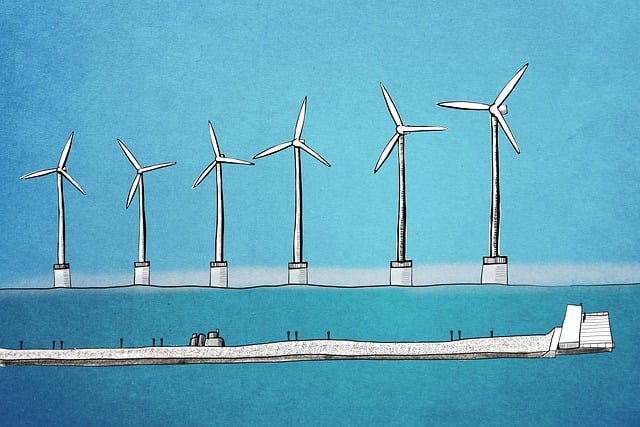
Traditionally, offshore wind farms were limited to shallow waters near the coastline. However, recent advancements have paved the way for wind farms in deeper waters.
Innovative support structures, such as jacket foundations and monopiles, provide stability and facilitate the installation of turbines in challenging offshore environments.
Moreover, the development of floating offshore wind platforms has opened up vast expanses of deep waters for clean energy production.
These platforms use advanced mooring systems to keep the turbines stable and utilize wind resources in previously untapped regions, further expanding the potential of offshore wind energy technology.
Pushing Boundaries with Advanced Support Structures
The progress in offshore wind technology has introduced innovative support structures that enable the deployment of wind farms in deeper waters.
Jacket foundations and monopiles have emerged as reliable solutions for stabilizing turbines in challenging offshore environments.
These support structures are designed to withstand harsh marine conditions, including strong currents, high waves, and varying seabed conditions.
Jacket foundations consist of lattice-like steel structures that are driven into the seabed to provide stability and structural integrity.
These foundations are widely used in offshore wind projects, especially in regions with deeper waters, such as the North Sea.
The design and installation of jacket foundations have undergone significant advancements in recent years.
Making them an effective solution for supporting turbines in varying water depths and challenging marine environments.
Fact: According to the European Wind Energy Association (EWEA), jacket foundations have become the dominant support structure in the offshore wind sector, accounting for approximately 80% of installed offshore wind turbines in Europe (Source: EWEA).
Expanding Horizons with Floating Offshore Wind Platforms
Floating offshore wind platforms have revolutionized the offshore wind industry by enabling the deployment of wind farms in previously untapped regions of deep waters.
These platforms utilize advanced mooring systems, including tension leg platforms (TLPs) and semi-submersible platforms, to keep the turbines stable and upright.
The advantage of floating platforms lies in their ability to be deployed in water depths where fixed foundation structures are not feasible.
This opens up vast expanses of deep waters, particularly in areas farther from the coastline or in regions with challenging seabed conditions.
The development of floating offshore wind platforms has expanded the potential of offshore wind energy technology.
Allowing for the harnessing of wind resources in areas with strong and consistent wind speeds, further maximizing energy production.
Collaborative Research and Development
The advancements in support structures and offshore wind platforms have been driven by collaborative research and development efforts.
Organizations such as the U.S. Department of Energy’s Wind Energy Technologies Office, Sandia National Laboratories, and industry leaders like GE Renewable Energy and Siemens Gamesa have been at the forefront of developing and testing these innovative solutions.
Through collaborative initiatives, research institutions and industry stakeholders conduct case studies and pilot projects to assess the feasibility, performance, and reliability of floating offshore wind platforms in real-world conditions.
These studies help refine design concepts, improve mooring systems, and enhance the overall efficiency and safety of offshore wind farms.
You may also be interested in How The Sustainable Energy and Environment Coalition Changes the World
Conclusion
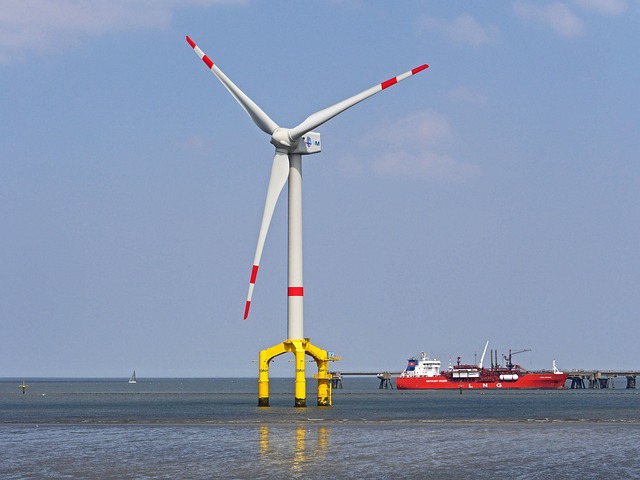
The advancements in support structures and offshore wind platforms have unlocked the potential for offshore wind farms in deeper waters.
The introduction of jacket foundations, monopiles, and floating platforms has overcome the limitations of shallow waters near the coastline.
Expanding the geographical scope for offshore wind energy production.
These innovations have pushed the boundaries of offshore wind technology, harnessing wind’s energy in previously untapped regions and propelling the industry towards achieving ambitious renewable energy goals.
As research and development continue to drive advancements in support structures and platforms, offshore wind farms will continue to evolve.
Ensuring a sustainable and clean energy future in global leaders of renewable energy.
5 Frequently Asked Questions About Advancements in Offshore Wind Turbine Technology
How much has offshore wind capacity grown in the past decade?
Offshore wind capacity has experienced exponential growth in the past decade.
According to the Global Wind Energy Council, the global market saw an increase of over 60 GW of offshore wind capacity from 2011 to 2021, reaching a total capacity of approximately 35 GW globally.
This growth demonstrates the rapid expansion of offshore wind energy technology and its increasing significance in the renewable energy sector.
What role do offshore wind technologies play in reducing carbon emissions?
Offshore wind technologies play a crucial role in reducing carbon emissions by providing clean and sustainable electricity.
Unlike fossil fuel-based power generation, offshore wind farms produce electricity without emitting greenhouse gases or other harmful pollutants.
The advancements in offshore wind turbine technology have significantly improved energy efficiency.
Allowing for greater electricity generation from renewable sources and reducing reliance on fossil fuels.
What are some recent developments in offshore wind turbine technology?
Recent developments in offshore wind turbine technology include the introduction of larger and more efficient turbines.
The use of advanced materials in blade design, and the implementation of advanced control systems.
These advancements aim to increase the capacity factors of offshore wind farms, enhance energy production, and reduce maintenance costs.
Additionally, ongoing research and innovation focus on exploring new offshore wind projects in deeper waters and improving energy storage solutions for reliable power generation.
How do offshore wind turbines impact marine life, particularly marine mammals?
Offshore wind turbines have undergone extensive environmental impact assessments to minimize their potential effects on marine life, including marine mammals.
Measures such as proper siting, noise reduction technologies, and monitoring systems help mitigate potential risks.
However, it is crucial to continue researching and implementing best practices to ensure the conservation of marine ecosystems while harnessing wind energy.
What is the future outlook for offshore wind turbine technology?
The future outlook for offshore wind turbine technology is highly promising.
Governments, industry leaders, and organizations worldwide are recognizing the potential of offshore wind energy and committing to ambitious goals.
For instance, the United States Department of Energy aims to deploy 30 GW of offshore wind capacity by 2030.
Advancements in technology, lower costs, and improved efficiency will continue to drive the growth of offshore wind energy.
Making it a key player in the transition toward a more sustainable and clean energy future.
Advancements in offshore wind turbine technology Conclusion
Advancements in offshore wind turbine technology have ushered in a new era of clean energy production, propelling the offshore wind industry to the forefront of renewable energy sources.
Through larger blades, taller towers, technological innovations, advanced materials, and support structures, offshore wind farms can harness wind energy more efficiently, even in deep waters.
These advancements have not only increased energy production but also reduced carbon footprints, lowered costs, and expanded the potential for offshore wind projects worldwide.
As the world addresses climate change and seeks to transition away from fossil fuels, offshore wind turbine technology stands as a beacon of hope, offering a sustainable and environmentally friendly solution to meet our energy needs.
With continued research, innovation, and collaboration, offshore wind technology will play an increasingly vital role in achieving a cleaner and greener future for generations to come.
Fact (Source): According to the National Renewable Energy Laboratory (NREL), the average capacity factor of offshore wind farms has increased from around 30% to over 40% in the past decade, demonstrating the improved efficiency of offshore wind turbine technology.
Recent Posts
Wind Energy and Its Economic Benefits for Local Communities Firstly wind energy has emerged as a powerful driver of economic development, particularly in local communities. It provides a...
Potential Energy in a Spring: Understanding the Fundamentals
Potential Energy in a Spring Firstly, understanding the potential energy in a spring is fundamental to grasping how energy is stored and transferred in various physical systems. Springs, as...


